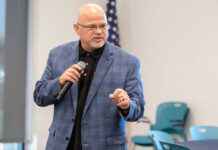By Murray Siegel
As parents look ahead to the upcoming school year, they may wonder how to tell if the new teachers will be the right ones for their child. You can go online and see ratings for doctors and restaurants, but how are teachers rated?
There are two primary methods to assess the abilities of a teacher. An administrator can observe the teacher and using a specific assessment tool, provide a rating for the teacher. The second method commonly used is to base the teacher’s evaluation on the test scores for that teacher’s students.
Both of these methods have serious flaws. An instructional observation tool focuses on certain teaching techniques, such as proper introduction of the lesson, engaging students, linking parts of the lesson to each other, providing students with a summary of what should have been learned. Unfortunately, the content of the lesson may not be evaluated since the evaluator may not have sufficient knowledge of the subject being taught.
For example, a high school physics teacher is observed by an assistant principal who was a teacher of foreign language and who has little scientific knowledge. Another example might be a fifth grade teacher being observed by the principal, whose teaching career was accomplished teaching first grade.
Using student test scores to appraise a teacher’s performance is similar to evaluating a physician based on the health of the doctor’s patients. The patients are told to stop smoking, eat right and exercise more, but they refuse to listen, and they suffer from serious health problems. Students might come from dysfunctional homes, where the child does not get sufficient nutrition or sleep, or there might even be physical abuse present. With students such as those, it would be grossly unfair to evaluate the teacher based on student performance.
What would be an effective method to evaluate classroom teachers? In China, Japan and Korea, teachers work in teams, working together on lesson preparation and observing each other on a regular basis. The observations lead to critiques which lead to improved teaching. The school year in these Asian nations are much longer that our school year, yet teachers spend less time teaching, since they are involved in team meetings and observations. To use a method such as this would require hiring more teachers. So, we must ask ourselves, “Which is more important – having exceptional teachers or lowering property taxes?”
Murray Siegel is a Maricopa resident. He has a PhD in Math Ed and 42 years of teaching experience. He and his wife Sharon volunteer at Butterfield Elementary.
This column appeared in the June issue of InMaricopa.

















![Elena Trails releases home renderings An image of one of 56 elevation renderings submitted to Maricopa's planning department for the Elena Trails subdivison. The developer plans to construct 14 different floor plans, with four elevation styles per plan. [City of Maricopa]](https://www.inmaricopa.com/wp-content/uploads/2024/04/city-041724-elena-trails-rendering-100x70.jpg)